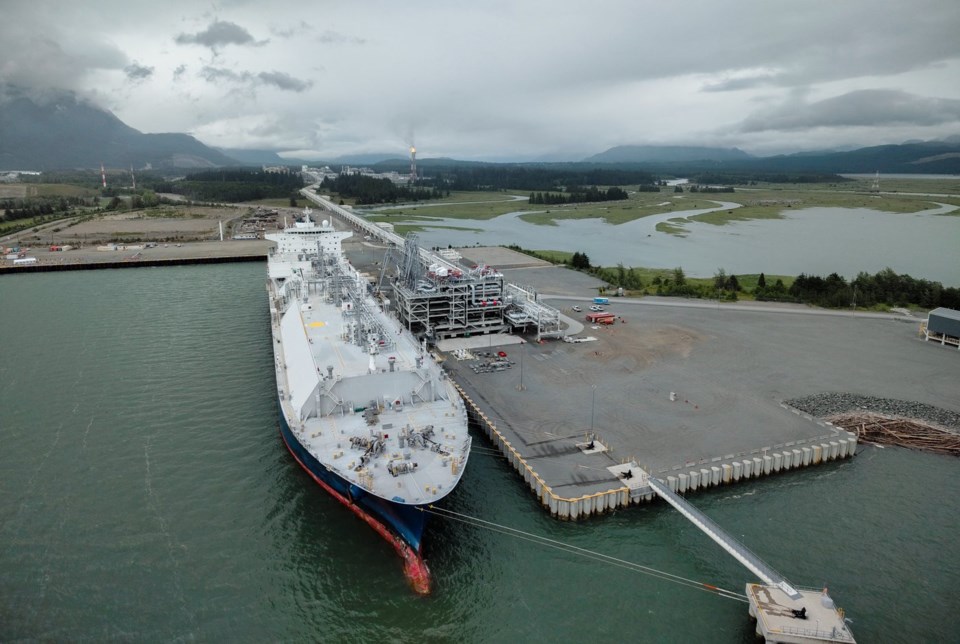A tanker that is set to carry Canada's first cargoes of liquefied natural gas across the Pacific to Asian markets has docked at LNG Canada's berth in Kitimat, B.C.
The GasLog Glasgow is being loaded with LNG produced in B.C., a spokesperson for the project said Monday.
British Columbia Coast Pilots said two of their members boarded the tanker near Triple Island on the remote northern B.C. coast and navigated the vessel on a 15-hour, nearly 300-kilometre journey to Kitimat.
"The arrival of the GasLog Glasgow at the LNG Canada terminal in Kitimat is a historic moment, and the BC Coast Pilots are proud to have supported this milestone," said Capt. Steve Kennedy in a written statement.
The pilots rotated shifts to ensure the one on duty was alert throughout the voyage. They were escorted by a tug purpose-built by HaiSea Marine, a company majority-owned by the Haisla Nation.
"This successful operation reflects more than 10 years of preparation and collaboration with government, industry, and coastal First Nations to ensure vessel operations are safe and to help minimize impacts on the environment and coastal communities along the route," Kennedy said.
LNG Canada is a joint venture between Shell and Malaysia’s Petronas, PetroChina, Japan's Mitsubishi Corp. and South Korea's KOGAS. Its first phase is expected to produce 14 million tonnes of gas a year and a second phase under consideration would double output.
It’s been billed by the federal government as the biggest private-sector investment in Canadian history — $40 billion between the port operation, the northeast B.C. gas fields supplying it and the pipeline in between.
Liquefied natural gas, or LNG, is gas that has been chilled at temperatures of -162 C into a liquid state, enabling it to be transported overseas in specialized tankers.
Gas produced in Western Canada could sell for a much higher price in Asia than if it were to remain landlocked, and advocates say securing new buyers would reduce Canada's reliance on the United States.
Until now, Canada's only export market for its gas has been the United States, via pipeline. The trade relationship between the two countries has been rattled by U.S. President Donald Trump's evolving tariffs and musings about annexing Canada.
Other LNG projects under construction include Cedar LNG, a joint-venture between Pembina Pipeline and the Haisla Nation and the Woodfibre LNG project near Squamish. A final investment decision has yet to be made on the Ksi Lisims facility near the border with Alaska, a partnership between Nisga’a Nation, Rockies LNG and Western LNG.
LNG has been touted as a “bridge” or “transition” fuel to supplant coal as a power source in emerging economies.
But Nichole Dusyk, senior policy adviser with the International Institute of Sustainable Development, said continued investment in fossil fuels puts Canada's economy, taxpayers and climate commitments at risk.
“As the shift to low-cost renewables accelerates, any further investment in LNG means doubling down on a volatile industry that is already showing signs of oversupply and shrinking market opportunities, including in Asia."
This report by The Canadian Press was first published June 30, 2025.
Lauren Krugel, The Canadian Press



